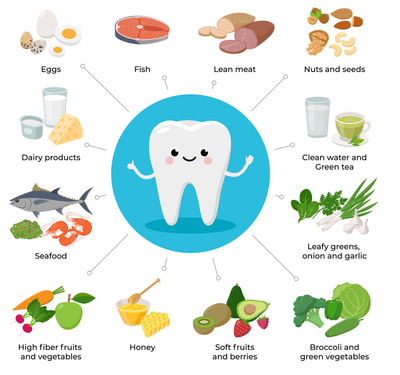Pediatric oral care has two main components: preventative care at the pediatric dentist’s office and preventative care at home. Though infant and toddler caries (cavities) and tooth decay have become increasingly prevalent in recent years, a good dental strategy will eradicate the risk of both.
The goal of preventative oral care is to evaluate and preserve the health of the child’s teeth. Beginning at the age of twelve months, the Canadian Dental Association (ADA) recommends that children begin to visit the pediatric dentist for “well baby” checkups. In general, most children should continue to visit the dentist every six months, unless instructed otherwise.
How can a pediatric dentist care for my child’s teeth?
The pediatric dentist examines the teeth for signs of early decay, monitors orthodontic concerns, tracks jaw and tooth development, and provides a good resource for parents. In addition, the pediatric dentist has several tools at hand to further reduce the child’s risk for dental problems, such as topical fluoride and dental sealants.
During a routine visit to the dentist, the child’s mouth will be fully examined, the teeth will be professionally cleaned, topical fluoride may be coated onto the teeth to protect tooth enamel, and any parental concerns can be addressed. The pediatric dentist can demonstrate good brushing and flossing techniques, advise parents on dietary concerns, provide strategies for thumb sucking and pacifier cessation, and communicate with the child on his or her level.
When permanent molars emerge (usually between the ages of six and twelve), the pediatric dentist may coat them with dental sealant. This sealant covers the hard-to-reach fissures on the molars, sealing out bacteria, food particles and acid. Dental sealant may last for many months or many years, depending on the oral habits of the child. Dental sealant provides an important tool in the fight against tooth decay.
How can I help at home?
Though most parents primarily think of brushing and flossing when they hear the words “oral care,” good preventative care includes many more factors, such as:
Diet – Parents should provide children with a nourishing, well-balanced diet. Very sugary diets should be modified and continuous snacking should be discouraged. Oral bacteria ingest leftover sugar particles in the child’s mouth after each helping of food – emitting harmful acids that erode tooth enamel, gum tissue, and bone if left unchecked. Space out snacks where possible, and provide the child with non-sugary alternatives like celery sticks, carrot sticks, and low-fat yogurt. It is also beneficial to avoid foods that are super sticky in texture such as chips, crackers and fruit gummy snacks.

Oral habits – Though pacifier use and thumb sucking generally cease over time, both can cause the teeth to misalign. If the child must use a pacifier, choose an “orthodontically” correct model. This will minimize the risk of developmental problems like narrow roof arches and crowding. The pediatric dentist can suggest a strategy (or provide a dental appliance) for thumb sucking cessation.

General oral hygiene – Sometimes, parents cleanse pacifiers and teething toys by placing them in their mouths. Parents may also share eating utensils with the child. Oral bacteria are transmitted from parent-to-child in these ways, increasing the risk of early cavities and tooth decay. Instead, rinse toys and pacifiers with warm water and avoid spoon-sharing wherever possible.
Sippy cup use – Sippy cups are an excellent transitional aid for the baby bottle-to-adult drinking glass period. However, sippy cups filled with milk, breast milk, soda, juice, and sweetened water cause small amounts of sugary fluid to continually swill around young teeth – meaning continuous acid attacks on tooth enamel. Sippy cup use should be terminated between the ages of twelve and fourteen months - or whenever the child has the motor capabilities to hold a drinking glass.

Brushing – Children’s teeth should be brushed a minimum of two times per day using a soft bristled brush and a pea-sized amount of toothpaste. Parents should help with the brushing process until the child reaches the age of nine and when the child is capable of reaching all areas of the mouth. It is recommended that parents choose a fluoride toothpaste when appropriate (non-fluoridated before the age of two, and fluoridated thereafter). For babies, parents should rub the gum area with a clean cloth after each feeding.
Flossing – Cavities and tooth decay form more easily between teeth. Therefore, the child is at risk for between-teeth cavities wherever two teeth grow adjacent to each other. The pediatric dentist can help demonstrate correct head positioning during the flossing process, and suggest tips for making flossing more fun!
Fluoride – Fluoride helps prevent mineral loss and simultaneously promotes the remineralization of tooth enamel. Too much fluoride can result in fluorosis, a condition where white specks appear on the permanent teeth, and too little can result in tooth decay. It is important to get the fluoride balance correct. The pediatric dentist can evaluate how much the child is currently receiving and provide suggestions or prescribe supplements if necessary.
If you have questions or concerns about how to care for your child’s teeth, please ask your pediatric dentist.